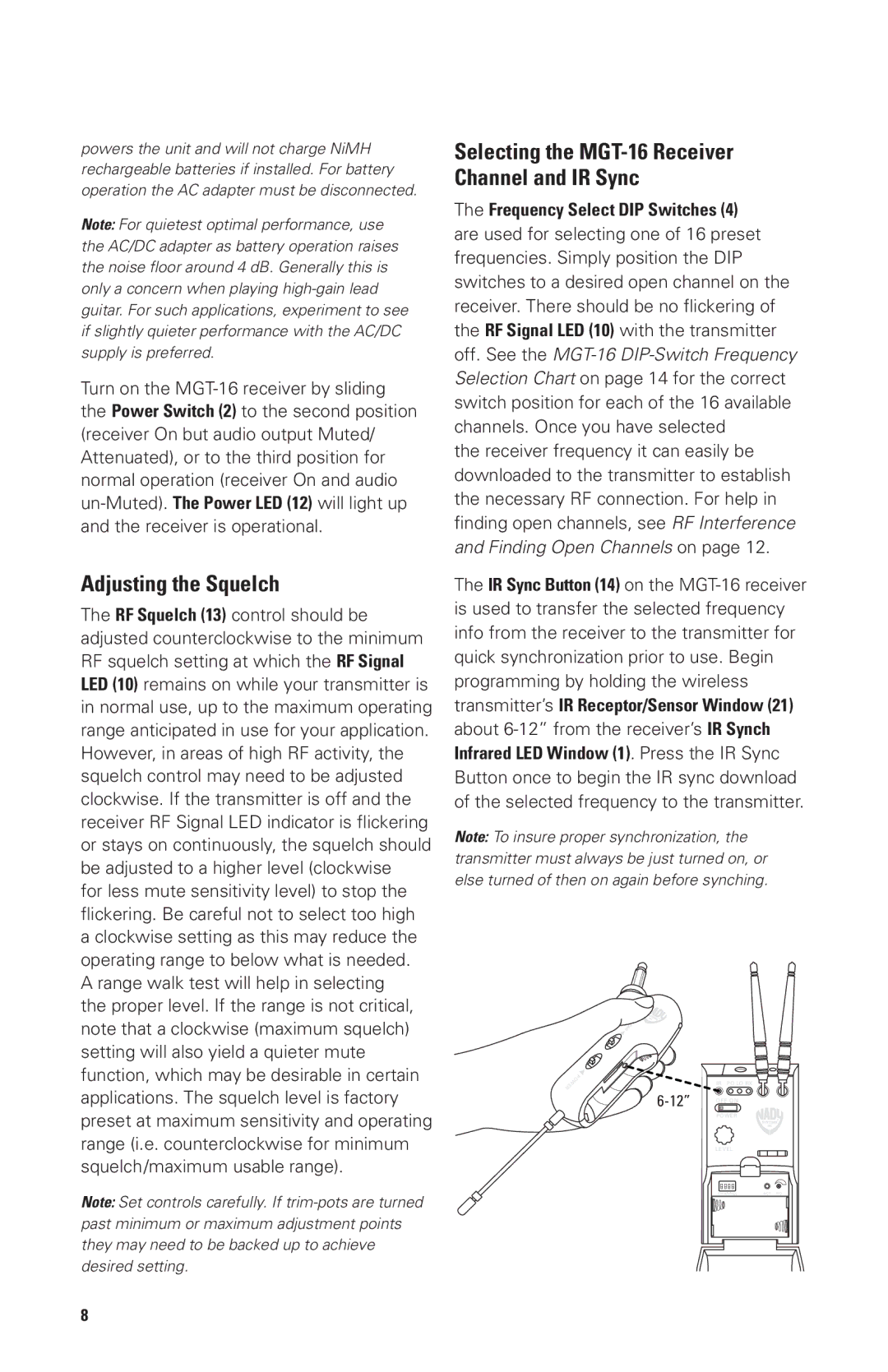MGT16R, MGT16A, MGT16 specifications
Nady Systems is a prominent name in the field of wireless microphone technology, and their MGT series—including the MGT16, MGT16A, and MGT16R models—has been designed to meet the needs of both professional performers and casual users. Each of these models showcases Nady's commitment to quality and innovation in audio transmission.The MGT16 is a versatile wireless microphone system that operates in the 16-channel UHF frequency range, ensuring a clear and reliable audio signal. This model is known for its high-quality audio performance, making it suitable for a variety of applications, from live performances to public speaking engagements. With its compact design and durable construction, the MGT16 is perfect for artists on the go.
Upgraded to the MGT16A, this model offers improved features such as auto-scan capabilities for finding the best available frequencies, ensuring minimal interference during operation. This is particularly beneficial in crowded environments where multiple wireless systems may be in use. The MGT16A retains the same user-friendly interface as its predecessor, allowing for quick setup and easy adjustments on the fly. Additionally, it boasts a longer battery life, providing peace of mind during extended performances.
The MGT16R enhances the line further with additional refinements in audio processing, delivering a richer sound profile. Its advanced diversity reception technology minimizes dropouts and enhances signal stability, which is crucial for professional applications. This model also features a robust metal receiver housing, designed to withstand the rigors of live performances and touring. The MGT16R also includes a high-quality dynamic microphone, which captures vocals with clarity and precision, ensuring that performers' voices are heard loud and clear.
Across the MGT series, common features include a lightweight design, which facilitates ease of use and portability, as well as an easy-to-read LCD display that provides users with real-time feedback on battery status and signal strength. Furthermore, Nady systems are engineered for fast and straightforward setup, allowing users to focus on their performance instead of technical difficulties.
In summary, the Nady Systems MGT16, MGT16A, and MGT16R wireless microphone systems embody the brand's pursuit of excellence in audio technology. With a range of features designed to enhance sound quality, signal reliability, and user convenience, these models are ideal for anyone seeking professional-grade audio solutions. Whether for stage performances, events, or personal use, Nady's MGT series stands out as a reliable choice in wireless microphone systems.

